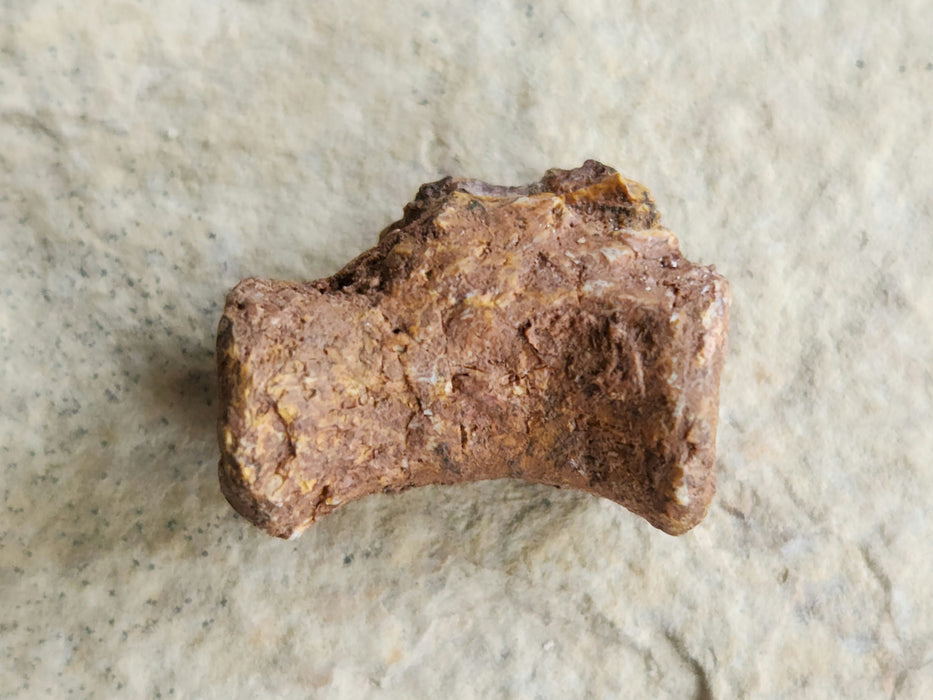
Dimetrodon Vertebra | Texas
Dimetrodon sp.
Permian
Nocona Formation
Archer County, Texas
Specimen approx. size: 17mm x 11mm x 9mm
Comes in an 1.25" acrylic case
One of the most notable characteristics of Dimetrodon is the large sail on its back, created by long spines that stretch out from its vertebrae. This creature walked on four legs and had a curved skull with a variety of large teeth of different sizes lining its jaws. Its distinctive sail may have served to stabilize its spine or regulate body temperature. However, recent research argues that the sail would have been ineffective at thermoregulation and suggests that it may have been primarily used for sexual display.
Often mistaken for a dinosaur or contemporary of dinosaurs in popular culture, Dimetrodon actually became extinct 40 million years before the first appearance of dinosaurs. Despite its reptile-like appearance and physiology, this species is actually more closely related to mammals than modern reptiles. However, it is neither a direct ancestor nor descendant of mammals.
Dimetrodon is traditionally assigned to a group known as "mammal-like reptiles", which has been more recently replaced by terms such as "stem-mammal" or "non-mammalian synapsid." This means that Dimetrodon is grouped with mammals in the evolutionary group Synapsida, while dinosaurs are placed with modern reptiles and birds in the group Sauropsida.
There were several species of Dimetrodon, ranging in size from 2 feet to 15 feet. Larger Dimetrodon would likely have been a dominant predator in Early Permian environments, preying on fish, tetrapods, reptiles, amphibians, and even smaller members of its own kind.







